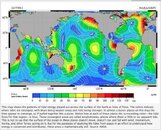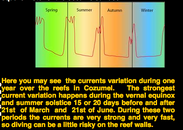... and sometimes how quickly you're descending can be deceptive, because you're in a moving frame of reference. I had to swim down and arrest the descent of someone dear to me a couple months ago ... in a mild downcurrent on a channel dive in the Maldives. She was fiddling with her camera while we were descending down a wall and didn't realize the current was pushing us down. By the time I caught up with her we were at 110 feet and falling fast. Grabbed her arm, showed her our depth, and we started swimming up hard. No telling when she'd have stopped if I hadn't caught up to her ... the bottom was another 300 or so feet below us.
There was some serious conversation going on when that dive was over ... mostly about paying attention to your descent and worrying about your camera once you get there ...
... Bob (Grateful Diver)





